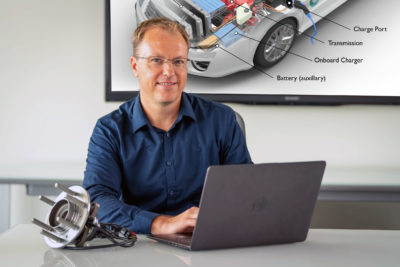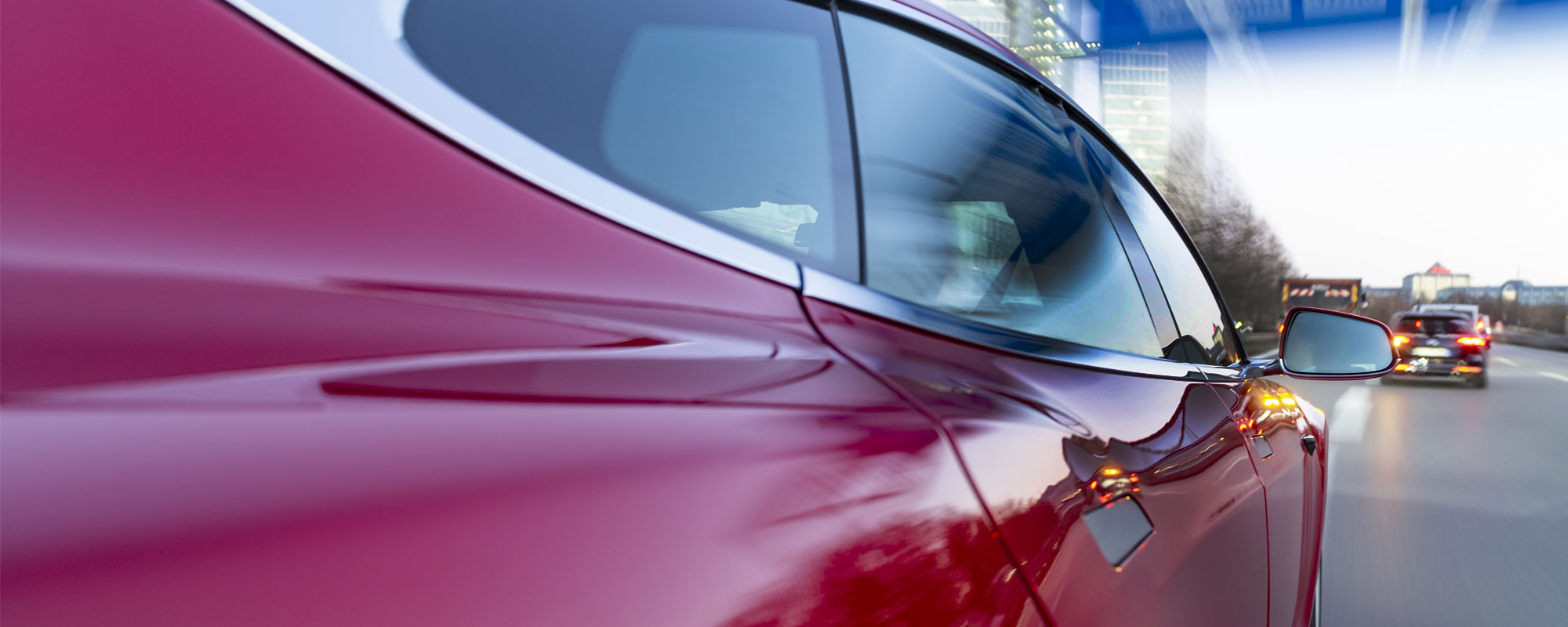Sustainability
Electric Vehicles: Driving What’s Possible
A Conversation with Ryan Fernandes, Principal Application Engineer
Since he can remember, Ryan Fernandes has had an affinity for science, math and racing. “Formula OneTM was kind of a family tradition. I went into mechanical engineering because it seemed like maybe it could take me somewhere in that realm.”
After beginning his career in his native South Africa, he moved with his family to the United States in 2015 and joined Timken as an application engineer. For the past four years, he has worked on electric vehicles (EVs), collaborating with industry designers to advance innovations that are making EVs more powerful and efficient.
It’s not Formula One but, as you’ll see, it’s not without high-speed adventures.

Background image courtesy of U.S. Department of Energy
Ryan Fernandes
Principal Application Engineer
Location: World Headquarters, Ohio, U.S.
Home country: South Africa
“I enjoy the natural environment, and I think it’s vital that we take up the challenge to help save it for our kids to experience and enjoy.”
What do your daily responsibilities look like?
Fernandes: The spectrum of solutions offered by Timken for EVs is diverse. My focus is on wheel end bearings, particularly for electric truck manufacturers. There are a variety of configurations for electric vehicles, and each of them has unique challenges and benefits.
Range is a big deal right now. People have anxiety over how far they can drive with EVs, so at Timken we work to increase power transmission efficiencies, reducing drag by fine-tuning bearing design and weight. The less weight you’re trying to move, the further you can go on a battery charge.
What makes Timken bearings ideal for EV applications?
Fernandes: We’ve been working for many years on power-dense designs, which change the internal geometry of the bearing to create tapered roller bearings (TRBs) that stay within a certain size envelope while efficiently handling the added system power or load requirements — in this case, the weight of a battery. That way, manufacturers don’t have to tear up their entire supply chain to make the switch to EV.
Additionally, we’ve seen new approaches that challenge historical designs. These concepts require a bearing that is very stiff. That requirement plays right into our tapered roller bearing (TRB) sweet spot, since TRBs are much stiffer than ball bearings.
What are the consumer advantages to electrification?
Fernandes: In addition to all the benefits inherent to the use of green energy, the number of mechanical components is minimized, which simplifies maintenance, reduces weight, increases range, and allows designers to maximize space for cabin and storage, which is handy in a work truck or off-road vehicle.
“What ultimately inspires me — thinking outside the box, coming up against a tough challenge and working through it. In this case, it’s about helping humanity get back to a place where we’re living more in harmony with the earth.”
Ryan Fernandes
Principal Application Engineer
What challenges do you face every day?
Fernandes: The biggest challenge is timelines. Everyone’s excited about the EV space, and that energy has intensified the competition. Programs that would typically take three to five years to implement, we’re now accomplishing in a year, year-and-a-half.
Producing high-quality products on those shortened timelines requires intense innovation and collaboration between functional groups — from design and product validation to manufacturing and quality control. It’s awesome to see how Timken’s culture, leadership and processes help everyone work together to achieve a common goal.
What inspires you to keep getting that work done every day?
Fernandes: Timken and our customers are taking on the challenge to do more with less, to create less waste. What we’re doing on EVs is a simple example, and it’s easy to see the lasting impact we’re making.
I also enjoy the challenge of working together as a team to create something new, to meet a new set of requirements. The only way to get out of the current, unstable environmental situation we’re in is for us to help advance designs with new requirements that support a more sustainable world.
That’s what ultimately inspires me — thinking outside the box, coming up against a tough challenge and working through it. In this case, it’s about helping humanity get back to a place where we’re living more in harmony with the earth.
From products to processes, see how Timken is reducing the environmental footprint of its own operations. Read more.
Last Updated: 2024/02/21
Published: 2021/09/26
